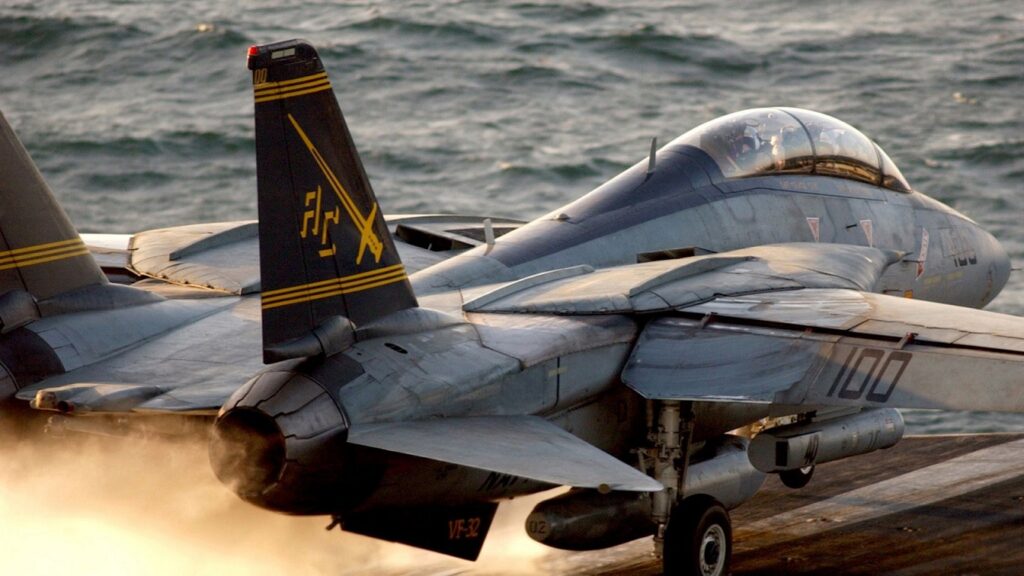Imagine an F-22 Raptor going up against a decrepit F-14B Tomcat in a duel and analyze this situation in a head-to-head digital battle simulator competition.

F-22 vs. F-14B. DCS screenshot.
Might the U.S. Air Force’s F-22 Raptor, widely considered the most muscular fighter plane in the world, be defeated by an F-14B Tomcat?
And yes, I am aware of it. The initial response is negative. And there are innumerable reasons why that is the case.
Although the F-22 is a state-of-the-art stealth fighter, its predecessor, the F-14, is a throwback to the Cold War.
Indeed, it is common knowledge that years ago, a U.S. F-22 Raptor flew just beneath an Iranian F-14 to peer at the latter’s arsenal before successfully scaring it away.
Now the question is: what do computer simulations of such a battle reveal?
There may be some clues to solving this heavenly match thanks to a PC video game simulator that has been popular for years and recordings of actual dogfights on this ground-breaking platform.
Growling Sidewinder is a DCS-centric YouTube channel where users arrange a duel between an F-14B Tomcat and a USAF stealth F-22 Raptor.
The video game simulation demonstrates that the old Tomcat would likely not stand a chance in practically any condition, contrary to what movies like Top Gun: Maverick tries to depict by presenting a fantastic way an old fighter like the F-14 could somehow win the day.
I appreciate that using what amounts to a video game to learn how an aging but venerable jet like the F-14 might do against the F-22 is met with skepticism.
DCS, on the other hand, has earned the respect of the United States Air Force as a credible testing ground for hypothetical aerial battles. Millions of people worldwide would agree that the game is a lot of fun once you get going, even though it requires a powerful computer, a lot of talent, and a lot of time to complete.
You can take control of various aircraft, including the F-15, Eurofighter Typhoon, and F-35. Because all the information used to model these planes comes from public sources, it stands to reason that no model is a replica of the real object.
To quote a U.S. Air Force pilot:
“DCS is a game I often engage in, and I respect its realism and capacity to simulate aircraft matchups that might one day be seen in the sky. It has some inaccuracies. Naturally, it lacks access to sensitive information. Still, it does an excellent job of providing us with things to ponder regarding how one fighter may fare against another in a hypothetical situation. That’s significant assistance, for sure.
The video above is intriguing, and you should check it out. Yet, it consistently destroyed the F-14B across various simulated battle scenarios.
The F-22 quickly gunned down the F-14 in the first, shorter combat, which was also the most exciting.
The F-14 met a flaming end in minutes in every other battle.
During the most recent engagement, the F-14B pilot displayed extreme bravery and aggression. Both planes collided with each other, however, resulting in catastrophic damage. The only way an old F-14 can take out a new F-22 is with a kamikaze attack, which is obviously unacceptable. Something for Iranian pilots to think about, given that the United States has the F-22 in its arsenal, and the Iranians could employ their ancient F-14s against them.
While speaking with a U.S. Air Force pilot, I inquired about the likely outcome of a dogfight between an F-22 and an F-14B, to which he responded, “That is a really foolish question.” Indeed.

F-14 Tomcat. Image Credit: Creative Commons.






